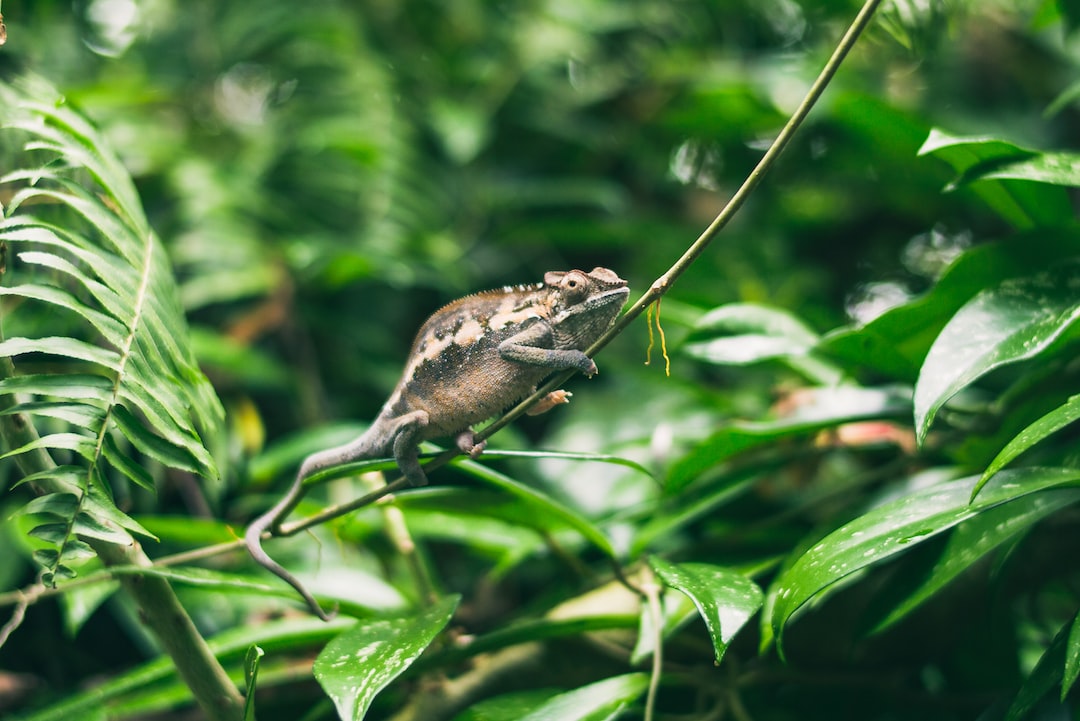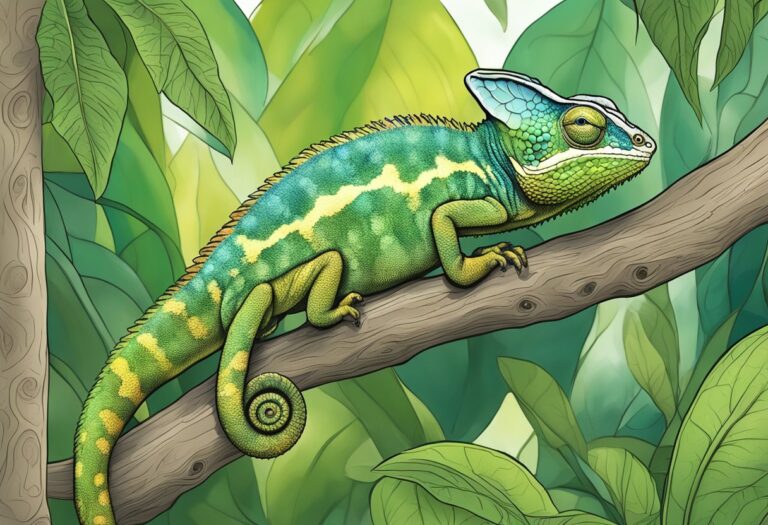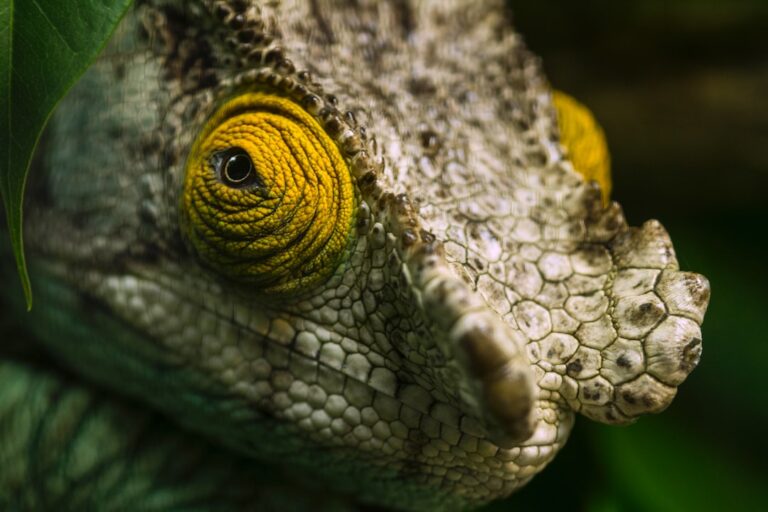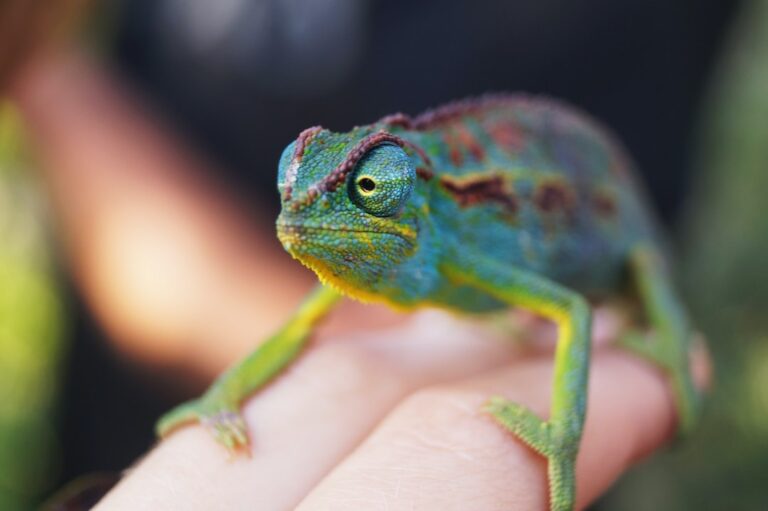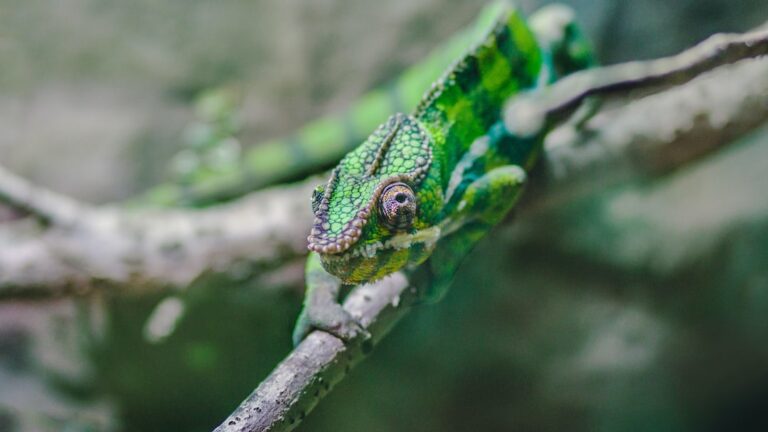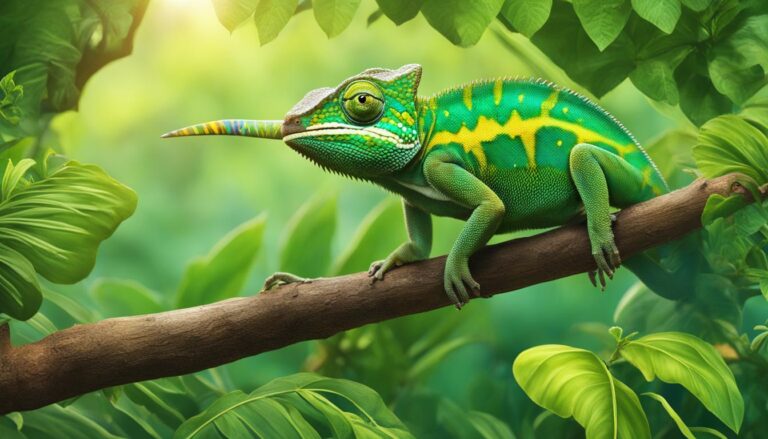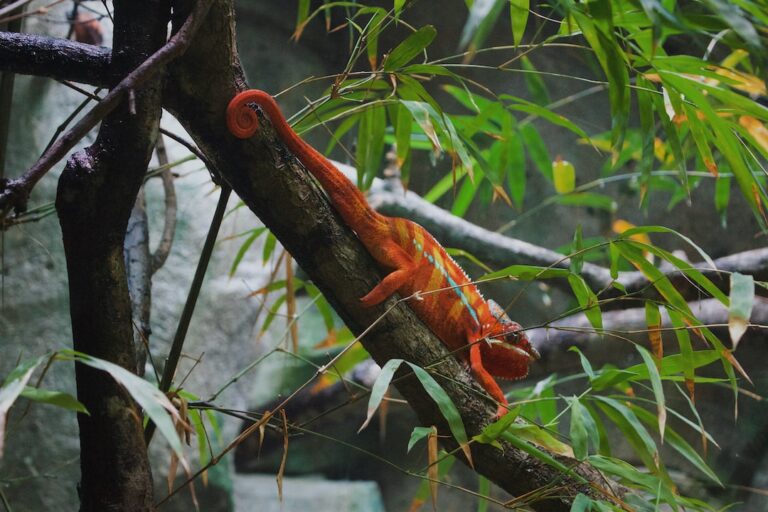Can Chameleons Drink From A Bowl?
Chameleons are fascinating creatures known for their ability to change color and blend into their surroundings. They are native to the rainforests and deserts of Africa, Madagascar, and parts of Asia. Chameleons have unique characteristics that set them apart from other reptiles, including their long tongues, independently moving eyes, and prehensile tails.
When it comes to drinking water, chameleons have some interesting habits. Unlike many other animals, chameleons do not lap up water with their tongues or drink from a bowl. Instead, they rely on a process called “gular pumping” to hydrate themselves. Gular pumping involves the chameleon tilting its head back and allowing water droplets to run down its throat. This method of drinking is essential for chameleons as it allows them to stay hydrated in their natural habitats where water sources may be scarce.
Table of Contents
The Importance of Providing Water for Chameleons
Water is crucial for the health and well-being of chameleons. It plays a vital role in maintaining their hydration levels, aiding digestion, regulating body temperature, and supporting overall bodily functions. Without access to water, chameleons can quickly become dehydrated, which can have serious consequences for their health.
Dehydration in chameleons can lead to a variety of health issues, including kidney problems, organ failure, and even death. Chameleons are particularly susceptible to dehydration because they live in environments with high temperatures and low humidity levels. Additionally, their small size means they have a limited capacity to store water in their bodies.
Factors to Consider When Choosing a Water Source for Chameleons
When it comes to providing water for your chameleon, there are several factors to consider. The most important factor is ensuring that the water source is clean and free from contaminants. Chameleons are sensitive to chemicals and toxins, so it’s crucial to use filtered or purified water.
There are several water sources available for chameleons, including misting, dripping, and using a water bowl. Each option has its pros and cons. Misting involves spraying water onto the leaves of plants in the chameleon’s enclosure, creating water droplets for the chameleon to drink. Dripping involves using a dripper system to create a slow and steady stream of water for the chameleon to drink from.
Can Chameleons Drink from a Bowl? Pros and Cons
One common question among chameleon owners is whether or not chameleons can drink from a bowl. The answer is yes, but it’s not the most natural method for them. Chameleons are arboreal creatures, meaning they spend most of their time in trees. In their natural habitat, they would encounter water droplets on leaves or catch rainwater as it drips down.
Using a water bowl for chameleons has its pros and cons. One advantage is that it provides a constant source of water for the chameleon to drink from. This can be particularly beneficial if you are unable to mist or drip water into the enclosure regularly. Additionally, a water bowl can help maintain humidity levels in the enclosure.
However, there are also some drawbacks to using a water bowl. Chameleons may not recognize a still body of water as a source of hydration, as they are accustomed to drinking from moving droplets. Additionally, stagnant water can quickly become contaminated with bacteria or parasites if not cleaned regularly.
How to Set Up a Water Bowl for Chameleons
If you decide to provide a water bowl for your chameleon, it’s essential to set it up correctly to ensure your pet’s health and safety. Here is a step-by-step guide on how to set up a water bowl for chameleons:
1. Choose the right size: The water bowl should be large enough for the chameleon to comfortably drink from without the risk of drowning. It should also be shallow to prevent the chameleon from submerging itself.
2. Use filtered or purified water: Chameleons are sensitive to chemicals and toxins, so it’s crucial to use filtered or purified water in the bowl. Tap water may contain chlorine or other contaminants that can harm your chameleon.
3. Place the bowl in a suitable location: Position the water bowl in an easily accessible location within the enclosure. Make sure it is stable and cannot be tipped over by the chameleon.
4. Clean and refill regularly: Clean the water bowl daily to prevent the buildup of bacteria or algae. Refill it with fresh, filtered water to ensure your chameleon has access to clean hydration.
Common Mistakes to Avoid When Offering Water to Chameleons
When it comes to offering water to chameleons, there are some common mistakes that owners make. These mistakes can lead to dehydration or other health issues in chameleons. Here are some tips for avoiding these mistakes and providing optimal hydration for your chameleon:
1. Inadequate misting or dripping: Chameleons rely on water droplets for hydration, so it’s crucial to provide regular misting or dripping in their enclosure. Ensure that the leaves are thoroughly wetted, and there are enough droplets for the chameleon to drink from.
2. Using unfiltered tap water: Tap water may contain chlorine or other contaminants that can harm your chameleon. Always use filtered or purified water when misting, dripping, or filling a water bowl.
3. Neglecting cleanliness: Stagnant water can quickly become contaminated with bacteria or parasites, posing a risk to your chameleon’s health. Clean the water bowl regularly and ensure that the misting or dripping system is free from debris.
Alternatives to Water Bowls for Chameleons
If you decide that a water bowl is not the best option for your chameleon, there are alternative water sources available. One option is to use a misting system that creates a fine mist of water droplets for the chameleon to drink from. Another option is to use a dripper system that provides a slow and steady stream of water for the chameleon to drink.
Both of these alternatives mimic the natural water sources that chameleons encounter in their native habitats. However, they require regular maintenance to ensure that the water is clean and free from contaminants.
Signs of Dehydration in Chameleons and How to Treat It
It’s essential to be able to recognize the signs of dehydration in chameleons so that you can take appropriate action. Some common signs of dehydration in chameleons include sunken eyes, wrinkled skin, lethargy, loss of appetite, and dark-colored urine.
If you suspect that your chameleon is dehydrated, there are several steps you can take to treat it. First, provide immediate access to water by misting or dripping water into the enclosure. You can also offer water directly using a syringe or dropper if your chameleon is too weak to drink on its own.
Additionally, it’s crucial to address any underlying causes of dehydration, such as inadequate humidity levels or improper hydration methods. Consult with a veterinarian who specializes in reptiles for further guidance and treatment options.
Tips for Encouraging Chameleons to Drink More Water
If you want to encourage your chameleon to drink more water, there are several tips you can follow. First, ensure that the humidity levels in the enclosure are appropriate for your chameleon’s species. Chameleons require high humidity levels to stay hydrated, so misting or using a humidifier can help create the right environment.
You can also make water more appealing to chameleons by adding natural flavors or supplements. Some chameleon owners have had success with adding a small amount of fruit juice or electrolyte solution to the water. However, it’s essential to consult with a veterinarian before adding anything to your chameleon’s water to ensure it is safe and appropriate.
Providing Optimal Hydration for Your Chameleon
In conclusion, providing water for chameleons is essential for their health and well-being. Chameleons have unique drinking habits that involve gular pumping, and they rely on water droplets for hydration. While using a water bowl is an option, it’s important to consider the pros and cons and ensure that the water is clean and free from contaminants.
Misting and dripping systems are alternative options that mimic the natural water sources chameleons encounter in their native habitats. Regardless of the method you choose, it’s crucial to provide regular access to clean water and maintain appropriate humidity levels in the enclosure.
By understanding the importance of hydration for chameleons and following proper care guidelines, you can ensure that your pet remains healthy and hydrated. If you have any concerns about your chameleon’s hydration levels or overall health, consult with a veterinarian who specializes in reptiles for guidance and support.
If you’re interested in learning more about reptiles and their behaviors, you might also enjoy reading the article “Why Do Turtles Fight to the Death?” This informative piece explores the fascinating phenomenon of turtles engaging in deadly battles. To find out what drives these fights and how they impact the turtle population, click here.

